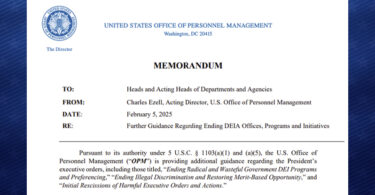By Eddie Waldrep, PhD, MSCP
VA Clinical Psychologist, combat Veteran, specialist in PTSD
The Department of Veteran Affairs (VA) has implemented a group to deliver care for Veterans who have been exposed to racism, the Race-Based Stress and Trauma Empowerment (RBSTE) group.
At first glance, this group does appear to make sense. Racism does exist and we definitely want to support our Veterans’ recovery in every aspect. However, the problem arises when we take a look under the hood.
There do appear to be several concerns with the group upon some moderate scrutiny.
The first is that white Veterans are specifically excluded from eligibility to participate in the group.
Once one takes a moment to reflect on this, it becomes clear that while racism does exist, no one is immune to race-based stress and trauma.
The mere fact that white Veterans are specifically excluded from participation has a couple of profound implications.
One is that it assumes, consistent with tenets of CRT, that all white people are inherently racist and that only white people can be racist.
The framework places white Veterans in opposition to every other individual of minority status as the inherent evil oppressor guilty by birth with white skin. White Veterans would be justified in their perception of that alone as race-based stress.
It also minimizes or ignores the occurrence of race-based stress among minority individuals and the potential for it to impact group dynamics.
If a Veteran of minority status has experienced race-based stress or trauma by another minority then what difference would it make for a white Veteran to participate in the group? It is only due to the ideological narrative, not reality.
Another major concern stems from the difference between what is considered race-based stress and race-based trauma.
Stress is a broad term that is quite subjective. Most commonly it is defined as being confronted with demands of a situation that exceed one’s coping capacity. Homework, traffic, taxes, difficult interpersonal relationships, racism, and many other occurrences can fall under the broad umbrella of stress.
As Professor John McWhorter points out, to think of minorities as inherently injured by a non-violent act of racism is to have low regard for the strength and resilience of an entire group of people. When it comes to psychological trauma, that has a very different definition and set of criteria.
As a clinical psychologist specializing in Posttraumatic Stress Disorder (PTSD), the definition of trauma is a crucial distinction from other forms of stressors. Trauma is defined, briefly, as exposure to an event that involves actual or threatened death or physical integrity of self or others or seeing these things as they happened to someone (e.g., combat, assault, sexual assault, severe motor vehicle accidents, natural disasters, etc.).
These criteria create another profound issue in excluding white Veterans from the group. When it comes to white and black interracial violence, the statistics are not in favor of the exclusion criteria.
In 2019, the Department of Justice publication of criminal victimization records included data on the race of both offenders and victims of violent crimes. The majority of violent crimes of both black and white groups were from other individuals of the same race.
However, between these two groups, 90 percent of interracial violent victimization is white victims and black offenders. This is a recipe for division and disaster.
By specifically excluding white Veterans, the VA is excluding the largest group of Veterans who may be victims of race-based trauma and likely to benefit from such an intervention.
At the same time, it is implicitly villainizing an entire group of Veterans based on the color of their skin which one can predict will create a sense of discontent in any group.
The discontent will only likely grow when the available data is in such stark contrast with the exclusion of white Veterans who may be more likely to be a victim of race-based trauma and may benefit from intervention.
As is common in this arena, the well-intentioned actions of the anointed may also have some negative effects on the population that it is purported to help.
This is also not a simple case of exclusion or villainizing white Veterans. It also reinforces a victimhood mentality and discounts a sense of personal agency in minority Veterans as well.
The intervention group endorses collective white guilt and promotes concepts with questionable scientific validity such as microaggressions and implicit bias that have the effect of gaslighting white and minority Veterans alike.
Last, but not least, there are also the legal implications. According to Title VI of the Civil Rights Act, discrimination based on race is prohibited in the delivery of services or access to a program from any federally funded institution or organization, of which the VA is definitely one.
Given that the intent of the group is to provide intervention to individuals who have experienced race-based stress or trauma, and that no one is immune from that experience, the discrimination based on race for exclusion criteria would appear to violate this law. However, when expressed, concerns appeared to fall upon deaf ears.
Our country has fought long and hard to overcome the oppression of the past and end segregation.
As Veterans, we took an oath to protect and defend the Constitution. We take pride in America’s accomplishments and overcoming the tribulations of our past as we continue to strive forward.
The VA ought not to be reimposing the segregation our nation’s heroes fought to defeat.
In the military, we say that we all have the same color blood running through our veins, we all wear the same uniform, and we are brothers and sisters in arms. I
f we focus on our universal humanity, then we can celebrate our differences.
If we focus on our differences, we deny our universal humanity.
–
Dr. Edward Waldrep is a Veteran of the War in Iraq, a Purple Heart recipient, and is currently a clinical psychologist for the Department of Veteran Affairs specializing in PTSD. Views expressed here are those of the author and are not the views of the Department of Veteran Affairs.








Leave a Comment